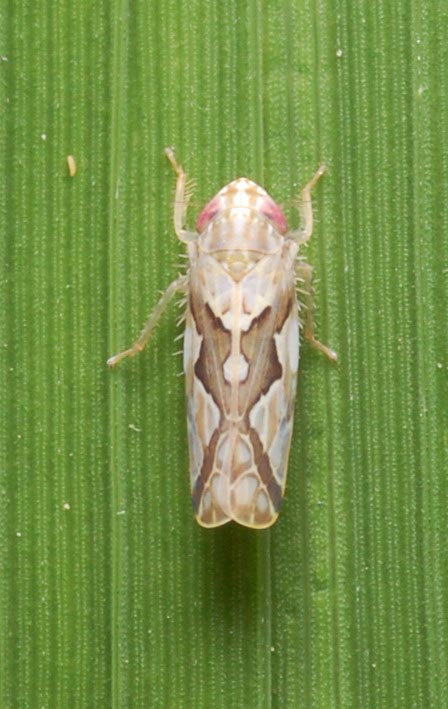Zigzag leafhopper

Recilia dorsalis (Motschulsky)
What it does
Feeding damage of zigzag leaf hopper causes the leaf tips to dry up, and whole leaves to become orange and curled.
Why and where it occurs
Grassy weeds and volunteer rice in fallow fields attract the zigzag leafhopper and the viruses it transmit to exist between rice crops.
The rice zigzag leafhopper is found in all rice environments. It is abundant during the early rainy season in the early growth stages of the rice plant. It rarely occurs in large numbers. The adults usually stay in the upper parts of the rice plants.
A high population density of the zigzag leafhopper occurs in seedbeds and weeds between planting seasons.
How to identify
Check the plants for the following symptoms:
- drying of leaf tips
- whole leaves become orange
- leaf margins become orange and curl
Check for the presence of insect:
- white eggs laid singly in the sheaths
- yellowish brown nymphs and adults sucking sap from the leaves in the upper parts and tillers near the base of the plant
Why is it important
In large numbers, these insects become important because they transmit viral diseases such as rice tungro, dwarf, and orange leaf viruses. They also feed on the rice plant during almost all the stages of the crop particularly during the vegetative stage.
Its low population, however, makes the insect a minor pest of rice.
How to manage
There are parasites and predators that help regulate the population of this insect. Mymarid wasps and the mirid bugs prey on the eggs. Dryinid wasps and pipunculid flies parasitize both the adults and the nymphs and spiders eat the adults.